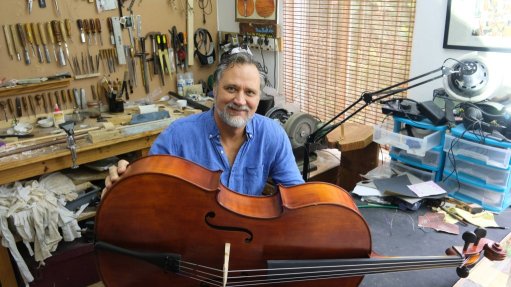Inside the green economy
It is often assumed that the green economy only relates to a specific type of technology or shifts in energy demand. The notion of the green economy has been in existence in South Africa for a long time.
Conceptually, the green economy notion gained prominence in South Africa after 2007 and many conferences and discussions on the issue have taken place. But why 2007 as the marker? Because it followed the financial crisis and several countries used fiscal policy to stimulate increased uptake of green economy initiatives. I am referring to the US, China, South Africa, Japan and many other countries. In the US, this mainly took the form of weatherproofing, energy efficiency and incentives for renewables. In China, this involved the rapid expansion of renewables, shutting down old smelters, low-carbon-city initiatives and many other interventions.
We can visualise these as add-ons to the existing economy – perhaps as a way of creating spare capacity, a form of Keynesian stimulus, to support more demand and growth. It can also be viewed as a large-scale clean-up operation and to encourage new capital investment.
A consequence of the 2007 fiscal spurt is that China, unlike the US, has used the post-2007 fiscal stimulus to take a much more strategic, long-term and embedded approach to the green economy. You have to look at several indicators of this: several aspects of its 2025 vision for advanced manufacturing, which is modelled on the German model, have a focus on the green economy; its experimentations with low-carbon cities; its determination to be fully reliant on electric vehicle by 2040; and many other announcements portray an image of China that wants to be a leader in this sector.
This is very different to the US, even though many US states and private players want to take the country on a different trajectory to the vision of the White House under Donald Trump. There is no coherent national strategy for the green economy in the US and, at the moment, the strategy is being torn down by Trump. In short, in the US, the green economy is in limbo.
In South Africa, the idea of the green economy is linked to our legacy of dirty industrialism. When people in South Africa talk of the green economy, their key reference point is a shift from dirty coal to renewables, and, ironically, the pronuclear lobby is also against dirty coal but sees nuclear as green. Further, there is focus on demand management, biofuels replacing oil, dealing with waste management, tackling smelters and the cement industry, besides others. These areas of technology shifts, consumptive shifts and focus on reuse are the core features of how the green economy is thought of in this country.
Prior to the green economy concept becoming fashionable in South Africa, versions of the green economy in the post-1994 period took the form of commercialising biodiversity conservation and the bioeconomy. We signed up to the Convention on Biological Diversity (CBD) and, where conservation became more people- orientated, it, ironically, also became more commodified and mainstreamed into the economy.
Protected areas had to be less dependent on the State and had to sell more of nature to tourists, and farmers shifted to wildlife trade and the hunting industry to keep themselves economically viable. The private sector was lauded, as private property and commercialisation could be used as instruments to save nature. The new government pushed to be more people- orientated and developmental, except that those in government had in mind the use of markets to ensure ‘fair and equitable sharing of benefits’. This process even extended to seed collection, bioprospecting, indigenous knowledge and the whole gamut of wildlife trade, where the South African government just recently legalised the rhino horn trade.
Well, you can go to many rural areas where the conservation estate is prominent and you will find coexisting with it a sea of poverty. Commercialising nature has been a one-way streak. You could not have a more perverse and paradoxical outcome than this. In the post-1994 period, the power of commerce was simply extended to public nature-based conservation. In a strange way, instead of the CBD taking us out of apartheid-based nature conservation – if you consider its three core principles – it merely opened the door to more nature commodification and foisted on us an economic apartheid over nature.
By this I mean that the de facto reality is that nature has become a rich person’s preserve and a poor person’s exclusion.
We will all be culpable of preserving the existing economic model if we keep talking of a green economy as a separate thing. We should unshackle ourselves from this notion if we are to truly transform the mainstream economy and the green economy. The focus should not be on price, markets or technology, but on how these are governed by values and institutions. Unless we embark on the ‘Great Transformation’ that economic historian Karl Polanyi talked about, we will become more and more immersed in markets and technology as the only solutions. To me, to stick to the green economy notion is to keep alive the ‘green’ in economy as an adjunct but, more profoundly, it reflects our total poverty of imagination.
Article Enquiry
Email Article
Save Article
Feedback
To advertise email advertising@creamermedia.co.za or click here
Comments
Press Office
Announcements
What's On
Subscribe to improve your user experience...
Option 1 (equivalent of R125 a month):
Receive a weekly copy of Creamer Media's Engineering News & Mining Weekly magazine
(print copy for those in South Africa and e-magazine for those outside of South Africa)
Receive daily email newsletters
Access to full search results
Access archive of magazine back copies
Access to Projects in Progress
Access to ONE Research Report of your choice in PDF format
Option 2 (equivalent of R375 a month):
All benefits from Option 1
PLUS
Access to Creamer Media's Research Channel Africa for ALL Research Reports, in PDF format, on various industrial and mining sectors
including Electricity; Water; Energy Transition; Hydrogen; Roads, Rail and Ports; Coal; Gold; Platinum; Battery Metals; etc.
Already a subscriber?
Forgotten your password?
Receive weekly copy of Creamer Media's Engineering News & Mining Weekly magazine (print copy for those in South Africa and e-magazine for those outside of South Africa)
➕
Recieve daily email newsletters
➕
Access to full search results
➕
Access archive of magazine back copies
➕
Access to Projects in Progress
➕
Access to ONE Research Report of your choice in PDF format
RESEARCH CHANNEL AFRICA
R4500 (equivalent of R375 a month)
SUBSCRIBEAll benefits from Option 1
➕
Access to Creamer Media's Research Channel Africa for ALL Research Reports on various industrial and mining sectors, in PDF format, including on:
Electricity
➕
Water
➕
Energy Transition
➕
Hydrogen
➕
Roads, Rail and Ports
➕
Coal
➕
Gold
➕
Platinum
➕
Battery Metals
➕
etc.
Receive all benefits from Option 1 or Option 2 delivered to numerous people at your company
➕
Multiple User names and Passwords for simultaneous log-ins
➕
Intranet integration access to all in your organisation


















